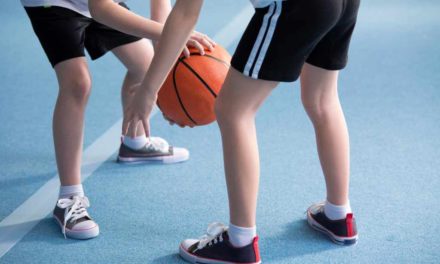When teaching PE, it can be difficult to make sure that your students are getting the most out of their lessons and are improving their abilities at a proper rate. Here’s our top 5 tips on how to boost performance in PE. All these techniques can be applied to any sport that you are teaching.
Gradual build up
Gradual build up is the act of taking a complex skill and breaking it down into smaller individual steps to make it easier to perform and understand. It is crucial in this process to make sure that the students master each step before moving on and stringing them all together.
For example, the lay up in basketball is a complex skill that can be broken down into progressive stages.
• Perform standing hop with shot directly under basket
• Add two steps before hop
• Add standing dribble before two steps
• Add walking/jogging dribble
• Perform layup at fast pace
• Add in passive defender
• Add in active defender
In 2018, W.B Young et al experimented with using gradual build up in speed sprinting for American Football players. They wanted to see if gradual build up affected an athlete’s top speed.
“The results of this study indicated that the gradual build-up to maximum speed produced a greater peak speed than the maximum acceleration run, with most participants demonstrating this trend.”
Repetition drills
Repetition drills are exactly as they sound. The act of repeating a specific action or skill until your accuracy goes up and you begin to get some form of muscle memory. When using this way of teaching, it’s really important to keep an eye on everyone so you can offer proper feedback, which is crucial for students to understand what they’re doing wrong or right. Repetition is a great technique to get students ready for competitive performance too.
“One of the most effective tools in an athlete’s training box is repetition. Look at the world’s top athletes: they practice their routines, their workouts, their skills a million times over in training, especially before big competitions.”
Conditioned games
Conditioned games are competitive games with a catch. You change the rules of the game to practise a certain skill. For example, let’s say you’re teaching a football lesson, you might do some 5v5 games where a team can only score once all their players have completed an accurate pass. If they don’t complete those passes, the game stops and you can give feedback to the players and offer advice on how they can complete it correctly.
If the players are completing that with ease, you could also change the game again and make it harder by introducing rules such as two-touch.
Not only do you get players improving on the skills you want them too, they also improve their behaviour and awareness in an in-game situation, as found by Sannicandro & Raiola:
“In conclusion, SSGs (Small sided games) offer obvious advantages in relation to the learning of technical and tactical skills in football.”
Pressure drills
Pressure drills are where you add a condition to a normal practice drill which increases pressure on the participants. For example, this could be an easy passing drill in rugby between 4 players in a circle, which you then add a defender in to try and intercept the ball. This makes training more game like and should increase motivation for players to use what they learn here and apply it to more competitive games.
This technique is used in Premier League Academies to great success, as found by Kent et al:
“Overall, the findings suggest that pressure training, cognitive behaviour interventions and reflective practice in combination could assist academy players to evaluate highly pressurized competition more adaptively, encouraging more favourable emotional and attentional responses to facilitate performance under pressure.”
Circuit training
Circuit training is where you have a set of activities that you do for around 30 seconds – 1 minute before moving onto the next one, like a circuit. Each of these activities takes place at a ‘station’ and can be designed to improve a number of different attributes such as speed, agility or muscular endurance. This is a great way to get improvements on smaller aspects of some sports like passing, shooting or dribbling.
This is a type of training that works well for young people, as found by Mayorga-Vega et al:
“The results of the present study show that it is possible to develop both muscular and cardiovascular endurance by means of an 8 week circuit training program in the PE setting.”
PEOffice can help give you the resources you need to improve
The new PE Office Virtual Learning Environment is a knowledge bank of unique and essential resources for PE departments, coaches, sports leaders and anyone involved in Sport. Our virtual platform includes a comprehensive assessment framework:
Video and performance analysis software, a virtual classroom, content library and resource building facilities.
Alongside this, there is the old side to the PEOffice where our unique portal has merged together to allow you one off purchases or unlimited access to all our new and updated schemes of work, lesson plans, theory lesson plans, evaluation sheets, assessment portal, exam platform and quizzes all in one place for your department, staff, performers and students.
For further details and a free online demonstration please call 01909 568 338 or email mail@peoffice.co.uk.









